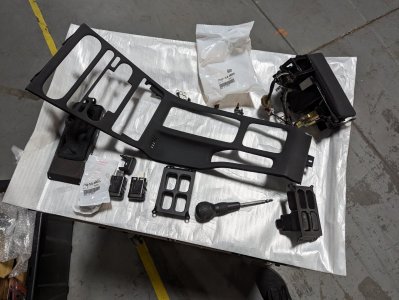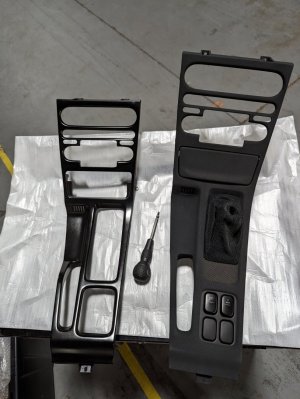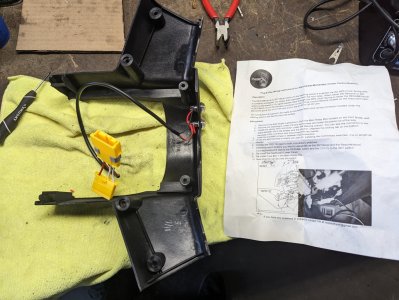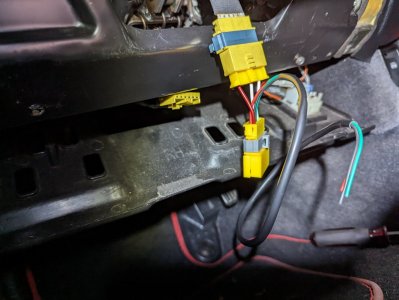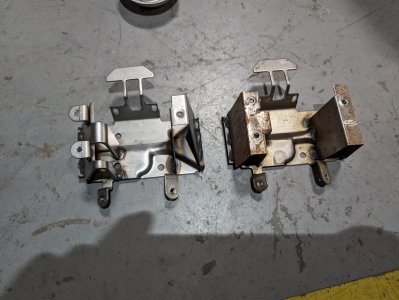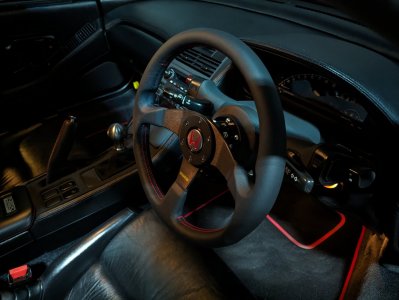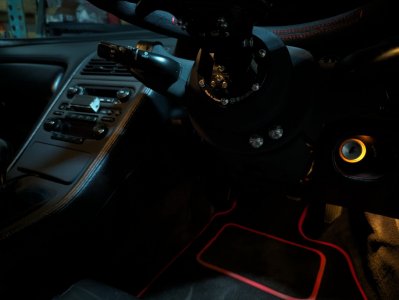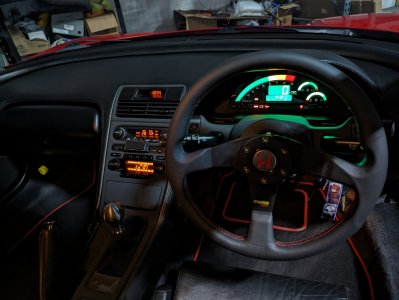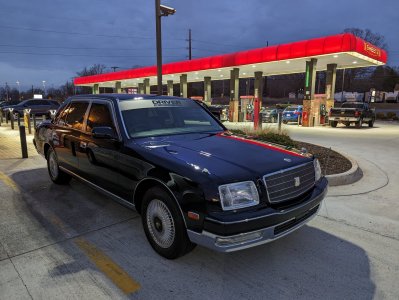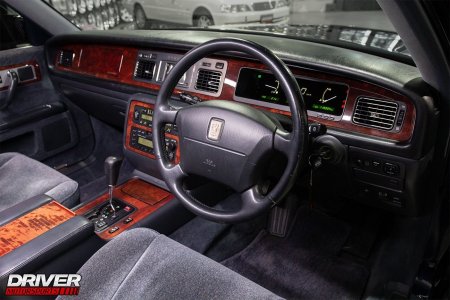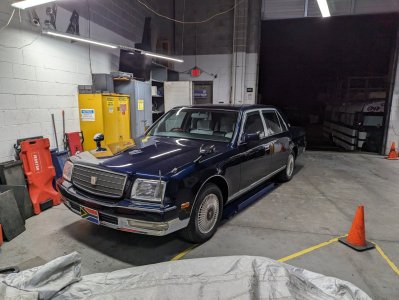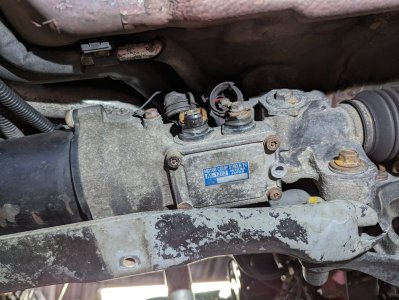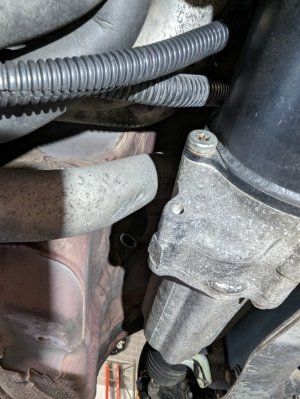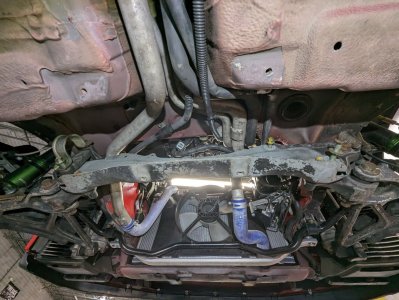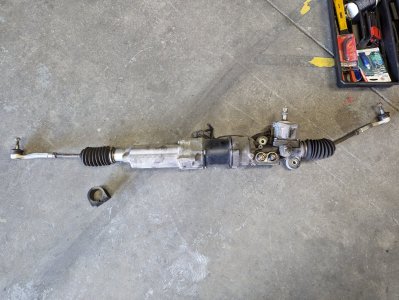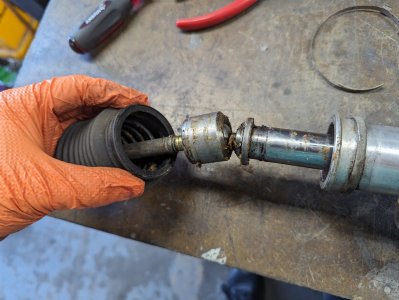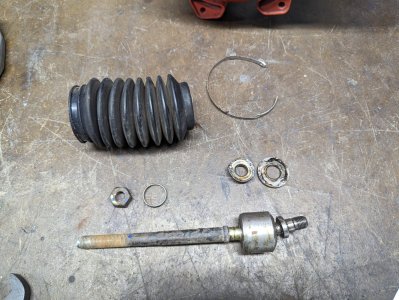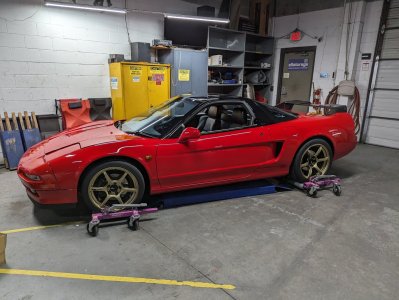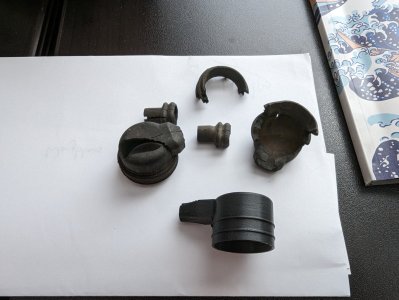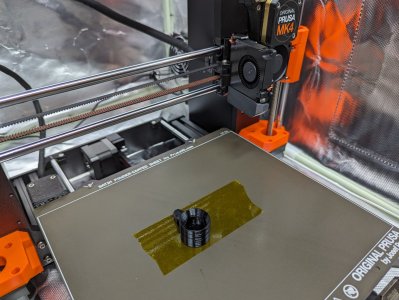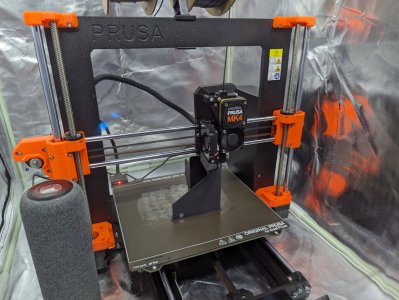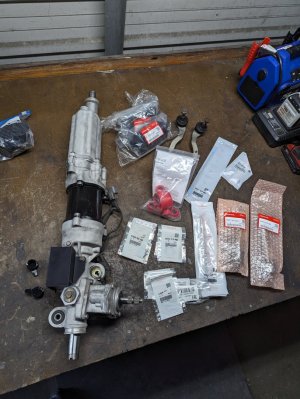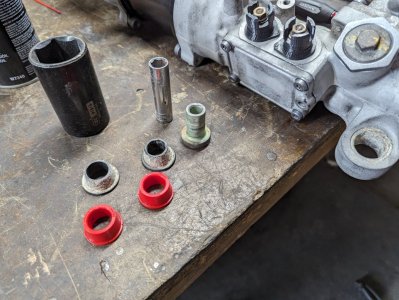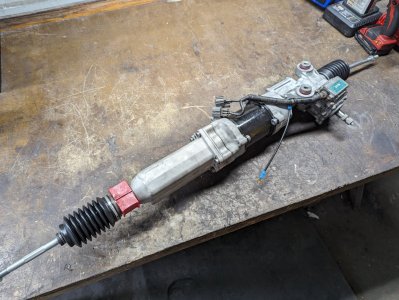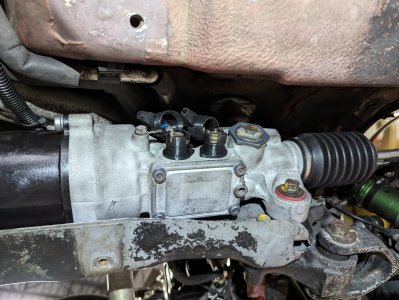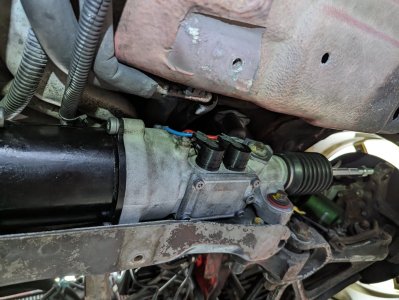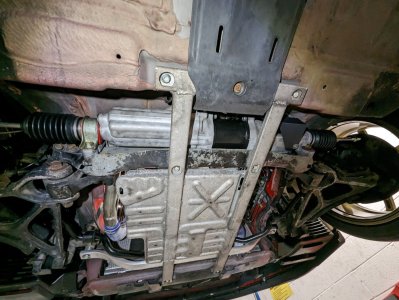Minor Parts Hoarding Updates & Shows
Quick update for the peoples.
Attending Caffeine & Exotics at AMP back in October but I never posted it. Great day and good times were had, plus a few parade laps on the track which felt a bit odd after the NSXPO track day here the previous month.
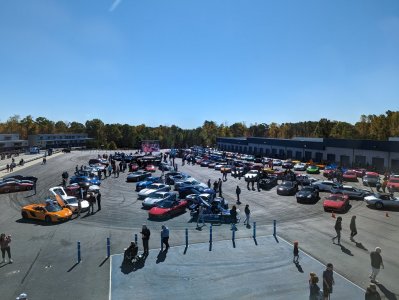
Yeaaaah buddy. I still have a bunch of tire rubber stains to remove from the paint that will require some clay bar action.
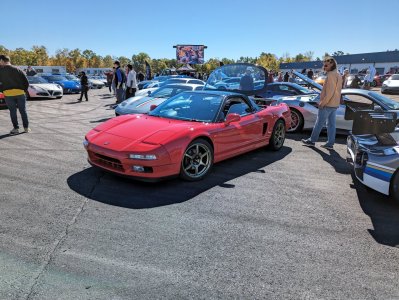
Parts and maintenance time post-track day. Much needed engine oil and transmission fluid changes.
Swapping from the Torco MTF back to OEM Honda seems to have helped with the shifting issues I was experiencing with the Torco, which definitely seemed to hold up better on track as I never had any issues with the trans as things heated up. However, it seemed to hurt my synchro grinding into 5th issue, and was starting to affect 4th at higher speeds too, plus the differential was noisy in tight, slow turns.
With the Honda MTF swap, all of the above issues are notably better, and I can normally shift into 4th and 5th up to about 60 MPH now without issues which is what I like for street driving. Fortunately no expensive bits were found in the trans fluid strainer either.
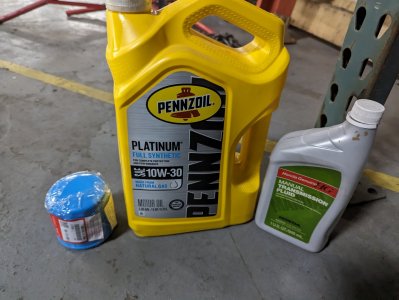
Much needed engine air filter change.
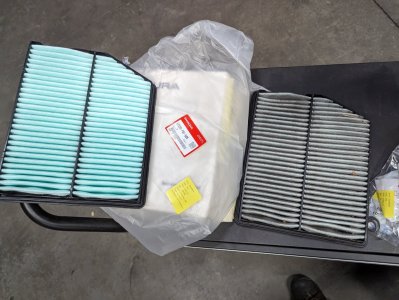
VVIS butterfly screw boroscope inspection also shows all systems green. These will be tack-welded during the next big drivetrain service.
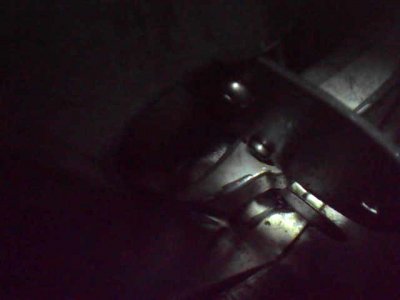
Now for the fun stuff. I've been comtemplating the NSX-R interior trim pieces for a long while and seeing the Brooklands Green NSX-R at NSXPO was the final straw.
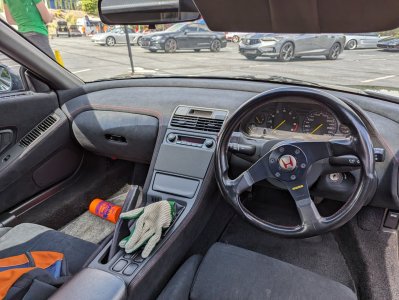
Pictured below are the NA1 NSX-R center console, ashtray cover, 3-piece steering wheel covers, center vent, and door trim covers, all for a reasonable price from ol' reliable Amayama. I will miss my repainted original pieces that I spent forever stripping & painting, but they were never quite perfect and didn't look as good in the sunlight.
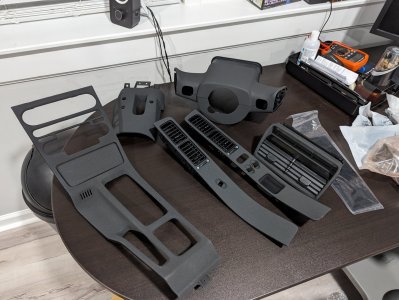
Honestly, I expected the part numbers I ordered to be the flat matte black ones in the NSX-R I saw, but they're actually a different finish that's a bit darker with a lot of glittery flecks in the finish that almost makes it look like the pieces are flocked (easier to see zoomed in). They look flat black in darker lighting but lighter and glittery in direct light, supposedly to match the alcantara fabrics all over the NSX-R. Not quite what I was expecting but I think I like it even more.
I also ordered a roll of black perforated Alcantara from Carbon 6 Composites to use on the door card inserts and replace the gathered leather, which is a bit worn & faded in my car. This is the beginning of a pretty deep rabbit hole but I'm taking the interior refresh one step (or several) at a time.
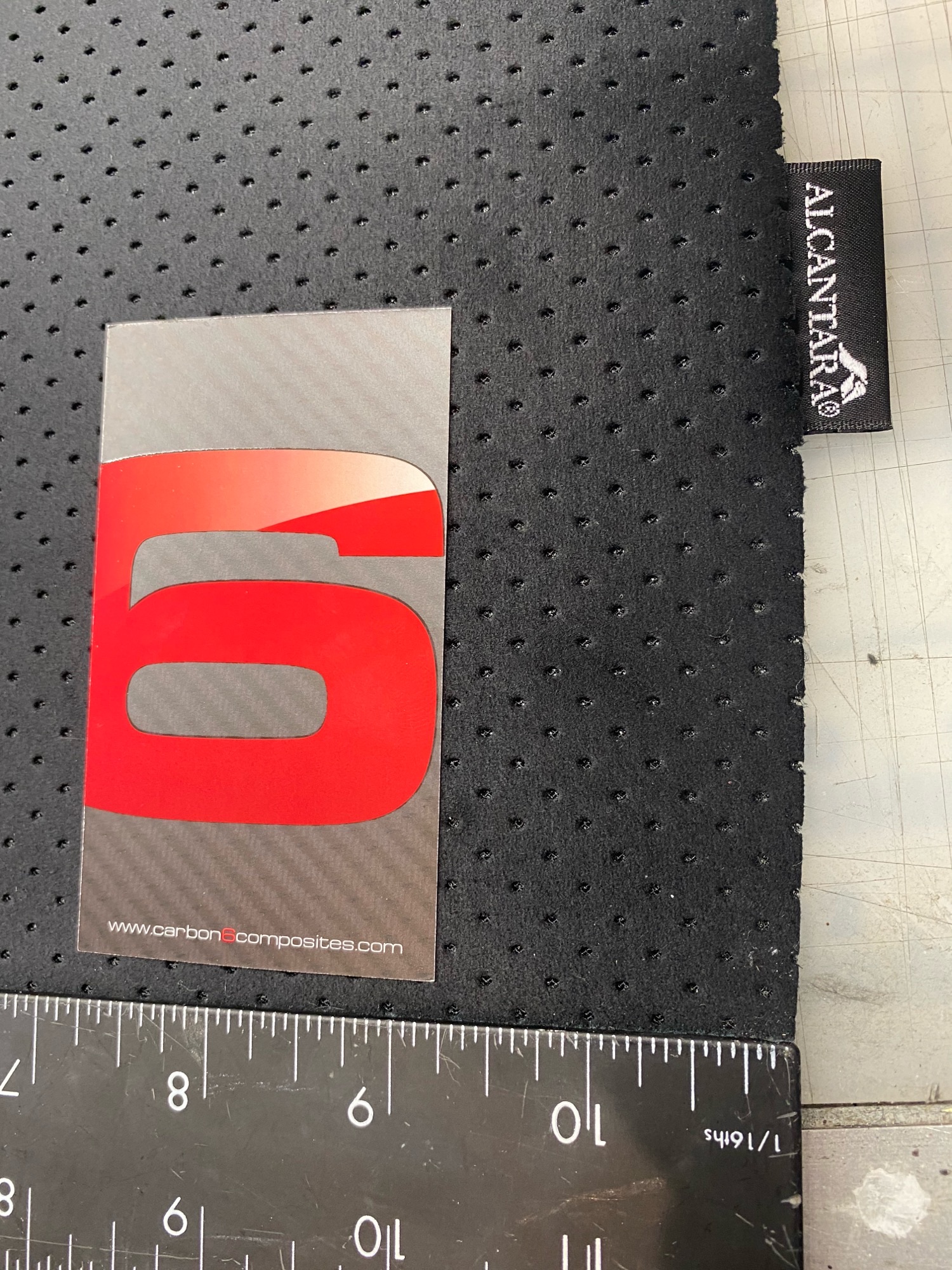
(image directly from C6C @ https://www.carbon6composites.com/product_info.php/cPath/3/products_id/51)
Finally, here's a mockup of the steering wheel solution I went with. Really just the stock NA1 NSX-R look but with a bit of spice thrown in with the Works Bell Rapfix GTC Hybrid wheel hub and Works Bell short boss adapter. It's not a quick-disconnect hub but a flip-up version for "quick driver changes" in a race, but I just think it's neat.
Nothing wrong with the recovered OEM wheel I had (plus the airbag...), but the look was wearing a bit old on me and honestly the red baseball stiching made the grip a bit uncomfortable.
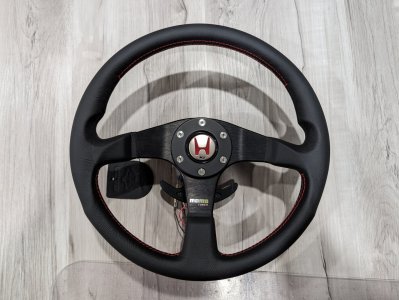
I like the period-correctness and look of the Momo Tuner wheel, this one is not the OEM NSX-R part but functionally the same for much less money as most people are wont to do. The horn button is also the El-Cheapo eBay knockoff, but if it works it works. The horn ring is the replica version from Kuya Auto (from RJ in-person at NSXPO ) and the countersunk ring retaining bolts are from Dress Up Bolts, polished titanium in M5 x 0.8 x 15mm.
) and the countersunk ring retaining bolts are from Dress Up Bolts, polished titanium in M5 x 0.8 x 15mm.
The Works Bell hub solution will be nice to have considering that the install is easier than the OEM hub and it retains the clock spring, which means the horn wiring is also plug-and-play. I bought two small stainless-steel momentary buttons to act as the cruise control buttons like other Prime members have done on the steering covers.
There is something to be said about the OEM NSX-R hub structural design with the included crumple zone and the risk tolerance of using an aftermarket billet solution, yet there has been just as much engineering, materials design and patents in the Momo and Works products for failure modes in the event of an accident that I feel comfortable using them. I could always get a motorcycle license instead .
.
That's enough rambling, the other good news is that I will *for real* be moving back to my home base in GA at the end of this year, and therefore will have much more time to spend with the car in 2024. Big plans in store
Quick update for the peoples.
Attending Caffeine & Exotics at AMP back in October but I never posted it. Great day and good times were had, plus a few parade laps on the track which felt a bit odd after the NSXPO track day here the previous month.

Yeaaaah buddy. I still have a bunch of tire rubber stains to remove from the paint that will require some clay bar action.

Parts and maintenance time post-track day. Much needed engine oil and transmission fluid changes.
Swapping from the Torco MTF back to OEM Honda seems to have helped with the shifting issues I was experiencing with the Torco, which definitely seemed to hold up better on track as I never had any issues with the trans as things heated up. However, it seemed to hurt my synchro grinding into 5th issue, and was starting to affect 4th at higher speeds too, plus the differential was noisy in tight, slow turns.
With the Honda MTF swap, all of the above issues are notably better, and I can normally shift into 4th and 5th up to about 60 MPH now without issues which is what I like for street driving. Fortunately no expensive bits were found in the trans fluid strainer either.

Much needed engine air filter change.

VVIS butterfly screw boroscope inspection also shows all systems green. These will be tack-welded during the next big drivetrain service.

Now for the fun stuff. I've been comtemplating the NSX-R interior trim pieces for a long while and seeing the Brooklands Green NSX-R at NSXPO was the final straw.

Pictured below are the NA1 NSX-R center console, ashtray cover, 3-piece steering wheel covers, center vent, and door trim covers, all for a reasonable price from ol' reliable Amayama. I will miss my repainted original pieces that I spent forever stripping & painting, but they were never quite perfect and didn't look as good in the sunlight.

Honestly, I expected the part numbers I ordered to be the flat matte black ones in the NSX-R I saw, but they're actually a different finish that's a bit darker with a lot of glittery flecks in the finish that almost makes it look like the pieces are flocked (easier to see zoomed in). They look flat black in darker lighting but lighter and glittery in direct light, supposedly to match the alcantara fabrics all over the NSX-R. Not quite what I was expecting but I think I like it even more.
I also ordered a roll of black perforated Alcantara from Carbon 6 Composites to use on the door card inserts and replace the gathered leather, which is a bit worn & faded in my car. This is the beginning of a pretty deep rabbit hole but I'm taking the interior refresh one step (or several) at a time.

(image directly from C6C @ https://www.carbon6composites.com/product_info.php/cPath/3/products_id/51)
Finally, here's a mockup of the steering wheel solution I went with. Really just the stock NA1 NSX-R look but with a bit of spice thrown in with the Works Bell Rapfix GTC Hybrid wheel hub and Works Bell short boss adapter. It's not a quick-disconnect hub but a flip-up version for "quick driver changes" in a race, but I just think it's neat.
Nothing wrong with the recovered OEM wheel I had (plus the airbag...), but the look was wearing a bit old on me and honestly the red baseball stiching made the grip a bit uncomfortable.

I like the period-correctness and look of the Momo Tuner wheel, this one is not the OEM NSX-R part but functionally the same for much less money as most people are wont to do. The horn button is also the El-Cheapo eBay knockoff, but if it works it works. The horn ring is the replica version from Kuya Auto (from RJ in-person at NSXPO
The Works Bell hub solution will be nice to have considering that the install is easier than the OEM hub and it retains the clock spring, which means the horn wiring is also plug-and-play. I bought two small stainless-steel momentary buttons to act as the cruise control buttons like other Prime members have done on the steering covers.
There is something to be said about the OEM NSX-R hub structural design with the included crumple zone and the risk tolerance of using an aftermarket billet solution, yet there has been just as much engineering, materials design and patents in the Momo and Works products for failure modes in the event of an accident that I feel comfortable using them. I could always get a motorcycle license instead
That's enough rambling, the other good news is that I will *for real* be moving back to my home base in GA at the end of this year, and therefore will have much more time to spend with the car in 2024. Big plans in store
Last edited:


